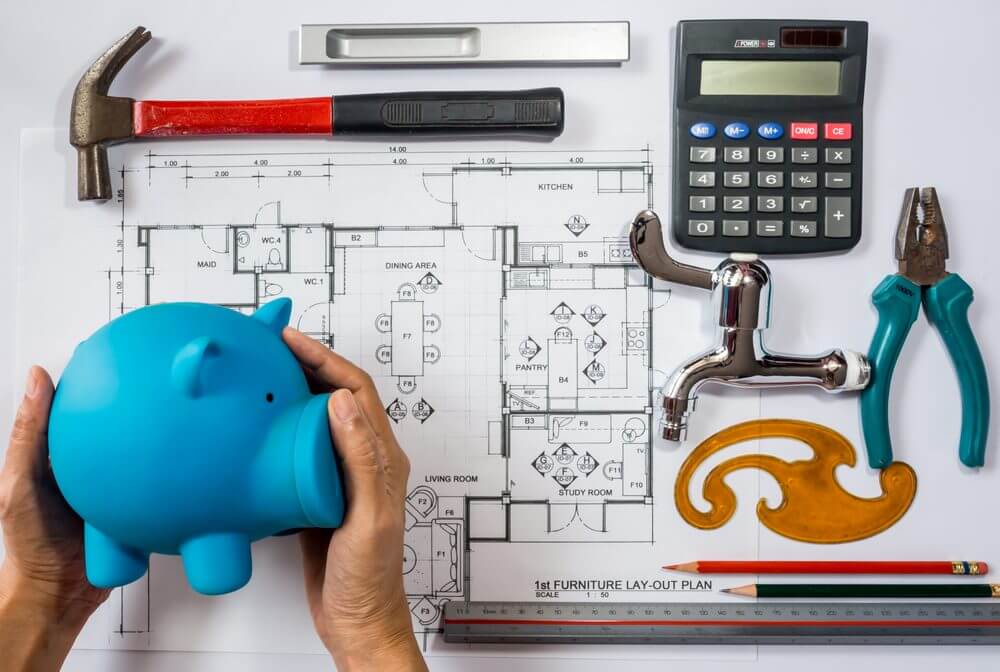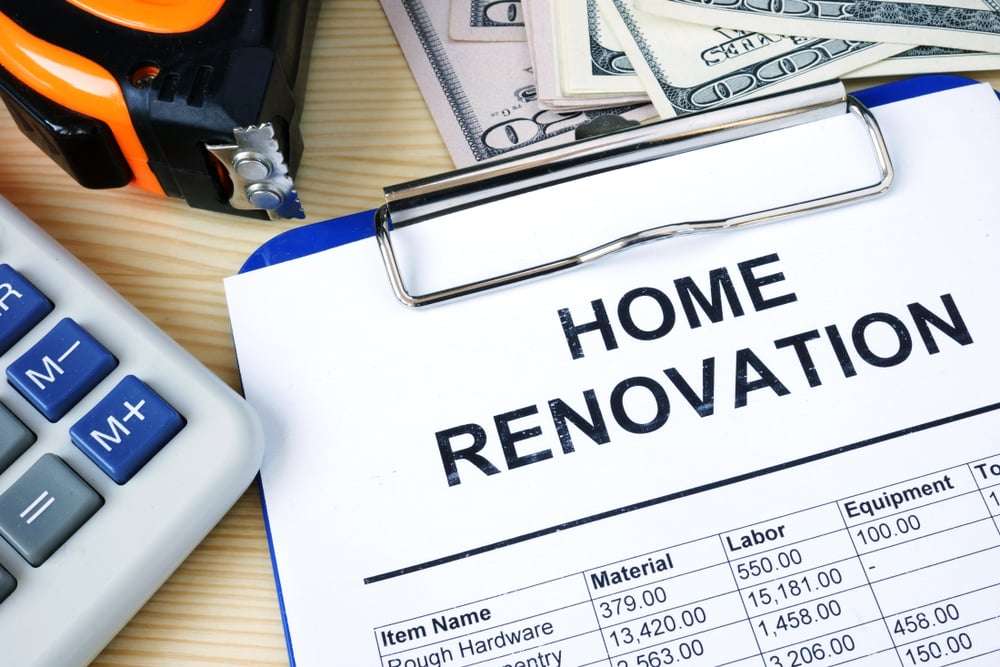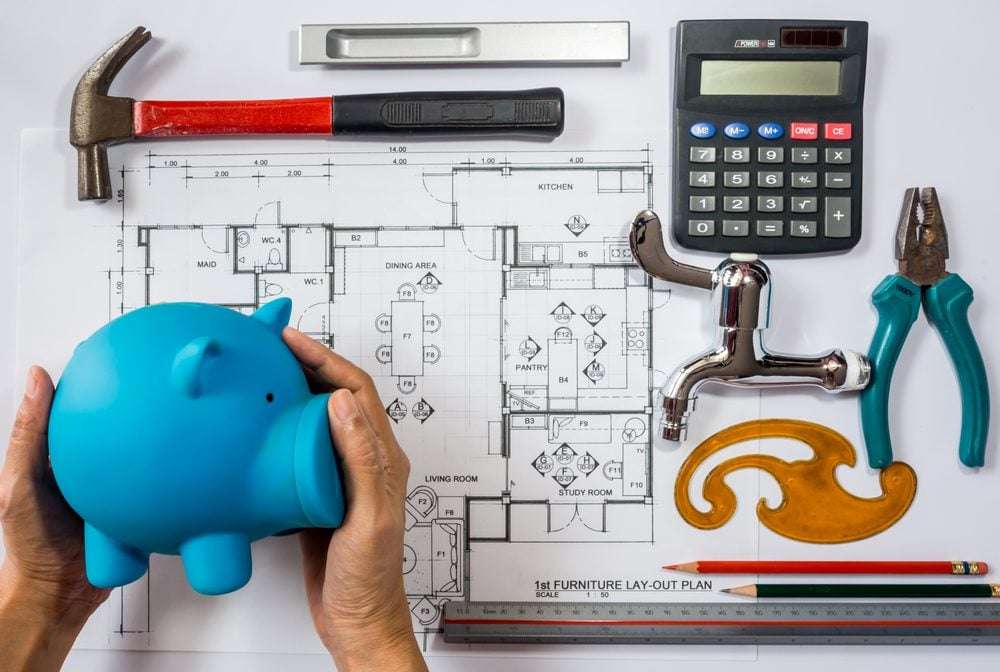Whether you recently purchased your home or have been residents for a while, chances are good there are at least a few aspects that you’d like to change. Many times people can be intimidated by the amount of time, effort or money that can go into home renovations, but there are ways to change things up around your abode without bankrupting yourself. Here are five tips for minimizing home renovation costs without stopping you from feeling more comfortable in your house.
Create a Budget for Renovation Costs
A good starting point of any home renovation is knowing exactly how much you have to work with financially. This can help inform the overall scope of the project, labor, materials and more, and help you develop expectations. Through creating a budget, you’ll understand how much funding you have available to you at the current time, and then how you want to divide those costs throughout the project. Some areas may be of more importance to you, such as getting a specific material or renovating one area first.
While home improvement projects can greatly vary financially depending on the type of project, there are a few ways to lower home renovation costs. While you most likely won’t be able to follow all of these suggestions, even a few that best suit your needs can help you shave off some extra costs.
Expect the Unexpected
As cliche as this phrase may be, it’s surprising how often it gets overlooked. Understanding that home renovations can often be complex or often take unforeseen turns is a large part of the process. Many people suggest looking into home warranty plans as a way to safeguard against unexpected home malfunctions. In addition, depending on the extent of your renovations, you may also need to update your homeowner’s insurance policy.
This becomes a key aspect financially. If you budget the complete sum of your money on the project, then, the moment that something throws a wrench in things, you might find yourself short on cash. Make sure you’re leaving yourself some wiggle room financially in order to cover any unexpected costs that may crop up during the course of the renovation. It’s often suggested that a buffer of around 10% of the project’s value should be considered, but that percentage can often be higher with older homes.
Take Your Time
A common aspect of human nature is becoming enthralled with an idea or concept, and then wanting it to be completed as quickly as possible to see the end result. As far as home renovations go, rushing them is never the correct option and could leave you with an undesired look, or simply an unsafe house.
Financially speaking, it makes more sense to complete a home improvement project over a reasonably set timeline. While this timeline may vary depending on several factors, discuss this with anyone else in the home in addition to contractors of any kind. Rushing through jobs can often burn through cash very quickly through the increased shipping costs of materials to high labor prices.
If you’re looking for a home improvement project that’s often very quickly completed, not to mention one of the cheaper options, redoing your floors might be the way to go. For a quick turnaround and low cost, here are some of the flooring trends to expect in 2022 that can help give your house a little something extra.
Look for Alternative Financial Sources
Finding the right amount of money for your home improvement projects is not always easy, as it’s often more than you have on hand, or can afford to spend at once. A study from Groundworks showed that last year “20 percent of homeowners plan to use their tax refunds for home repairs or upgrades” which is up from the previous year.
While saving up for a period of time beforehand is very much encouraged, that’s not the only way to afford some of these renovations. Properly planning ahead of time and accumulating savings for a substantial portion of the project is highly recommended, but can be supplemented with other methods.
A very common source of funding is looking into a home equity line of credit (HELOC). A HELOC is taking advantage of the equity you have accrued in your home, and receiving that money in a lump sum of cash. The money can be used for anything you need, and when used to make improvements to your home, provides tax-deductible benefits
Another way is to rely more heavily on your credit cards in order to fund some of these projects. Many cards offer cashback perks or other rewards which can help reduce some of your expenses. While this can be beneficial in certain niche situations, it’s important to use caution to not go over your credit limit or miss payments causing you to accrue higher interest rates.
Learn to Find Compromises
Finding compromises is not only key in all relationships, but also key in all home renovations. Many times, especially when trying to be conscientious about home renovation costs, getting exactly what you want every step of the way simply isn’t feasible.
If you know you want to redo both the kitchen and bathroom, then decide which one is a higher priority instead of doing them both at the same time. This allows you to not only have a more streamlined timeline, but also plan financially for your future renovations. In addition, instead of going with your dream name-brand product, oftentimes you can find a very similar option for a fraction of the cost. This allows you to invest in other areas of the renovation, without sacrificing the look or functionality of your goal.
People spend a lot of their lives stressing about their financial situation, and while some of that is unavoidable, there are many ways to make it a little easier. For those looking to make some home renovations, taking into consideration even a few of these tips can greatly reduce not only the amount of money being spent on the project, but the amount of time worrying about it as well. Crafting the perfect kitchen or bedroom is very possible, but knowing that it won’t happen overnight is key to wrangling both expectations as well as finances.

About the Author
Meet Bridgett, your friendly neighborhood green building guru! With more years of experience than she’d like to admit, Bridgett is your go-to expert for all things eco-friendly construction. She’s on a mission to make your home the envy of every tree hugger in town (and maybe even the squirrels 🐿️). Let’s build a greener, funnier, and all-around better world together – one enlightened eco-conscious choice at a time!



